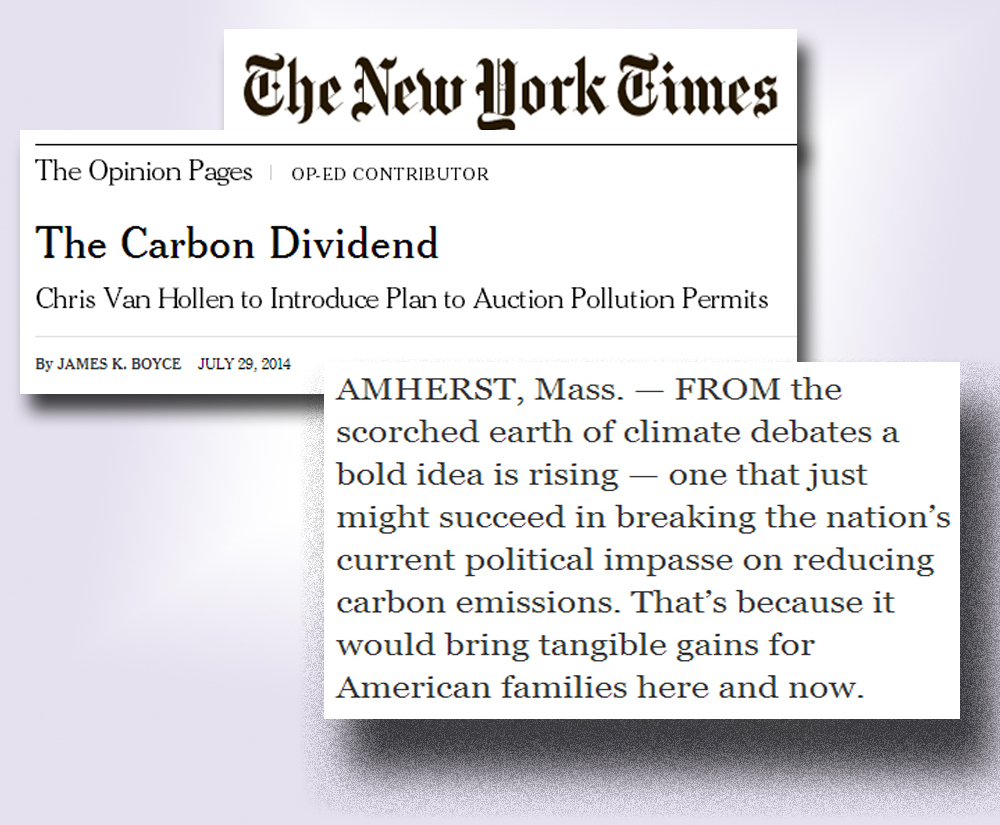Today, as Congressman Chris Van Hollen (D-Md.) prepares to introduce cap and dividend legislation in Congress, the opinion page of the New York Times features a compelling case for “The Carbon Dividend” the bill would provide.
In the op-ed, James K. Boyce, an economics professor at the University of Massachusetts, Amherst, writes that, “From the scorched earth of climate debates a bold idea is rising — one that just might succeed in breaking the nation’s current political impasse on reducing carbon emissions. That’s because it would bring tangible gains for American families here and now.”
Professor Boyce lays out how Congressman Van Hollen’s bill will at once “put more money in the pockets of families and less carbon in the atmosphere without expanding government.” Sound too good to be true? It’s not. By placing a hard cap on heat-trapping fossil fuel emissions — and requiring oil, coal and gas companies to pay for pollution permits at auction — the bill would simultaneously tackle climate change and boost the incomes of more than 80 percent of U.S. families:
This cap would gradually ratchet down to 80 percent below that level by 2050. Prices of fossil fuels would rise as the cap tightened, spurring private investment in energy efficiency and clean energy. Energy companies would pass the cost of permits to consumers in the form of higher fuel prices. But for most families, the gain in carbon dividends would be greater than the pain. In fact, my calculations show that more than 80 percent of American households would come out ahead financially — and that doesn’t even count the benefits of cleaner air and a cooler planet.
As the cap tightened, prices of fossil fuels would rise faster than quantity would fall, so total revenues would rise. The tighter the cap, the bigger the dividend. Voters not only would want to keep the policy in place for the duration of the clean energy transition, they would want to strengthen it.
